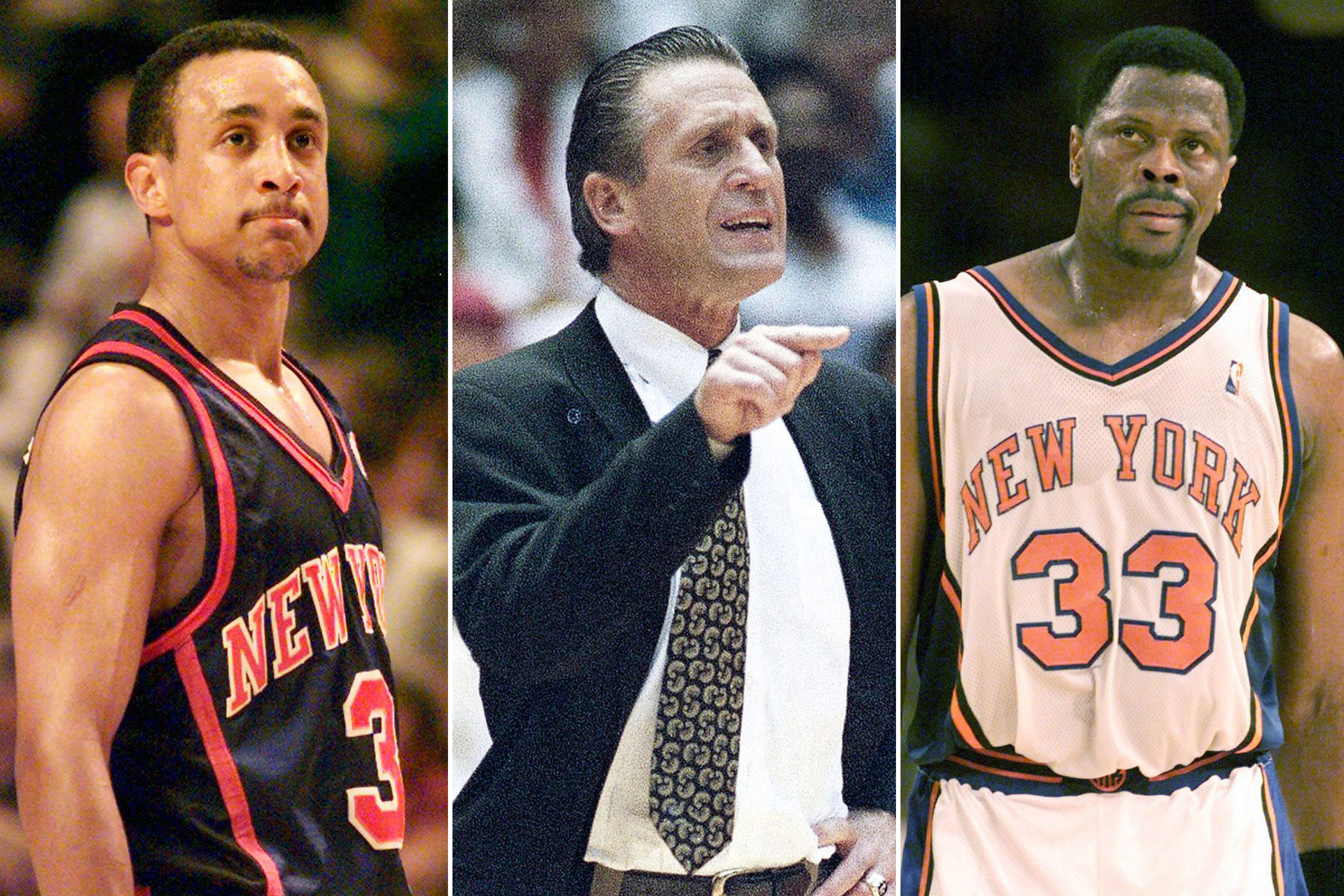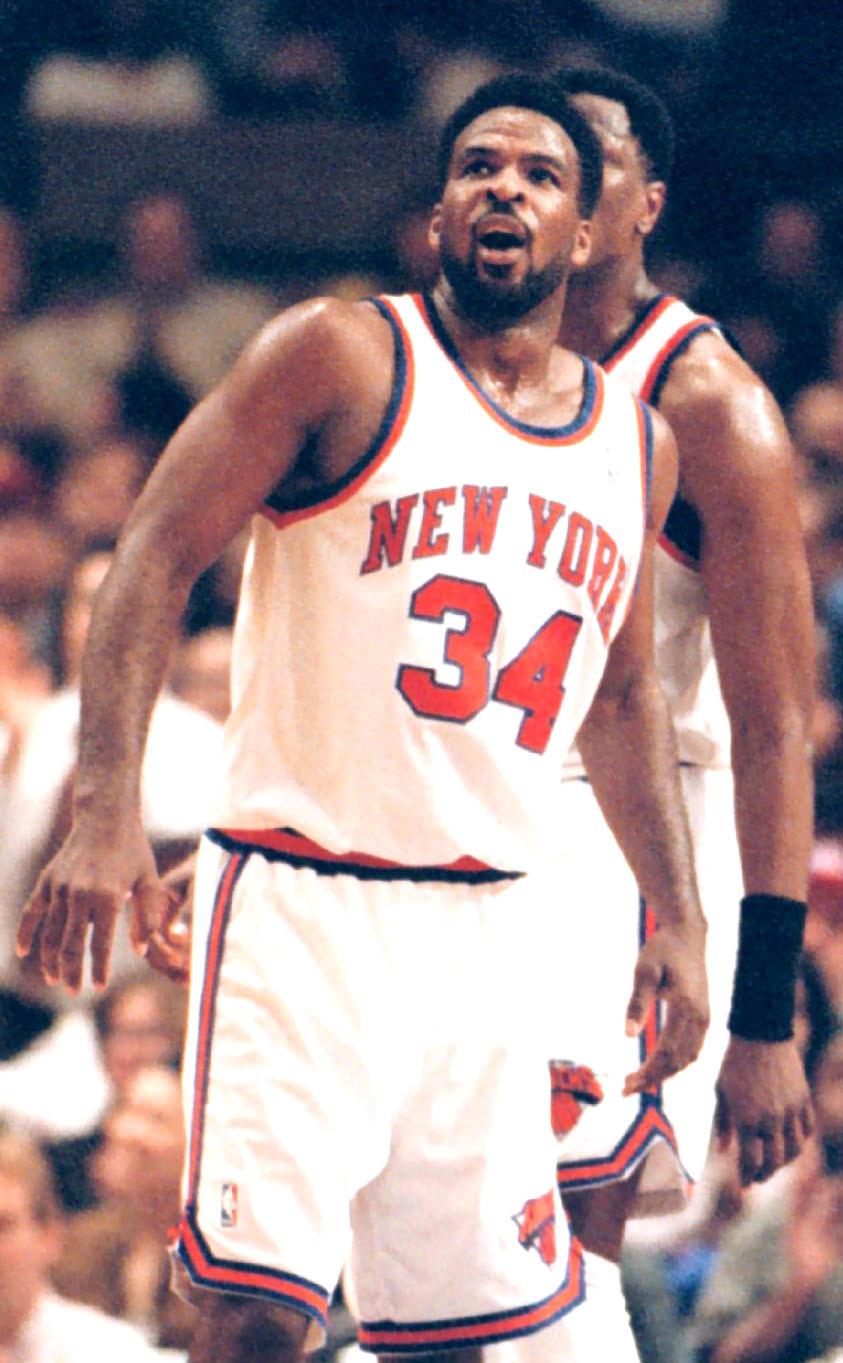More On: charles oakley
Charles Oakley: Julius Randle ‘a better version of Zion Williamson’
Charles Oakley reveals shocking offer Knicks made to end feud
Knicks’ 1990s glory days captured in two compelling books
Michael Jordan stepping into Knicks feud didn’t sit well with Charles Oakley
Charles Oakley’s Knicks answer: Snag Tom Thibodeau, get talent
Knicks fans will get to reminisce like it’s 1999. During this gloomy Knicks century of basketball, two books are emerging about the 1990s Knicks to brighten the day. The first, written by
Knicks fans will get to reminisce like it’s 1999.
During this gloomy Knicks century of basketball, two books are emerging about the 1990s Knicks to brighten the day.
The first, written by lawyer-turned-author Paul Knepper, is on sale now: “The Knicks of the Nineties: Ewing, Oakley, Starks and the Brawlers That Almost Won It All.”
The second, “Blood On The Hardwood: The Flagrant History of the 1990s Knicks” penned by former Wall Street Journal Knicks beat writer Chris Herring, will be published in 2021.
Knepper, who lived and died with the successes and failures of the 1990s Knicks powerhouses, started his research three years ago. He conducted interviews with 100 sources — with former Knicks and Garden president Dave Checketts turning out the most helpful.
Charles Oakley, John Starks, new Knicks head coach Tom Thibodeau (an assistant from 1996-2004), Jeff Van Gundy, Herb Williams, Charlie Ward and Chris Childs, among others, participated in the project.
As the book notes, the 10 full seasons with Pat Riley and then Van Gundy as head coach (with 59 games at the start of the 1995-96 season led by Don Nelson) netted a .628 winning percentage. The Knicks made the playoffs every season, advanced to the Eastern Conference finals four times and made it twice to the NBA Finals.

Since Van Gundy’s resignation in 2001, the Knicks have employed 13 head coaches, made the playoffs four times and captured just one playoff series. Lastly, the Knicks have registered the most losses in the NBA this century.
“I don’t think Golden State Warriors or Lakers fans are nostalgic right now about other eras,’’ Knepper told The Post. “But this is a great fan base and New Yorkers love their Knicks. It’s been pretty brutal to watch the last two decades and people are nostalgic for those ’90s teams.”
For now, the Knicks haven’t played a game in nearly eight months because of the pandemic. And that might be a good thing.
“It just came to me three years ago — I think about the Knicks more than I should,’’ Knepper added. “I’m one of those people who long for those days in the ’90s. It struck me: Someone should write a book about those days and I thought, ‘Why not me?’ ”
Knepper uncovered a host of fresh nuggets, most interestingly about Riley’s fateful decision to stick with Starks during Game 7 of the 1994 Finals versus the Rockets. The popular shooting guard clunked his way to an epically disastrous 2-of-18 shooting night — 1-for-10 in the second half.
According to “Knicks in the Nineties,” Riley spent the afternoon of Game 7 hanging out in his hotel room at Houston’s Ritz Carlton with close friend Dick Butera. As Riley and Butera waited for the hotel elevator to head to the arena, Riley said to Butera, “Well, buddy, I know three guys that are gonna show up tonight?”
Butera asked, “Who?”
Riley replied, “You, me and John.” John was John Starks.

Knepper said that boast may have been ringing in Riley’s head during Starks’ shooting collapse, prompting the coach to refuse to put Rolando Blackman or Hubert Davis into the game.
“Starks reminded Riley of himself,’’ Knepper said. “I think there was an emotional attachment. He couldn’t help but believe in him. And he thought ultimately Starks would come through and start making shots.’’
After the Game 7 devastation, a desolate Riley bellied up to the bar in the hotel with Van Gundy (then his assistant) and Butera by his side and ordered “a vodka and coke.’’
The bartender politely asked Riley if he was sure because he’d never made that drink.
“He was in a trance,’’ Butera said.
Riley, Butera and Van Gundy sat by the bar in silence for more than an hour — a silence broken only to “express their disbelief” at Starks’ shooting performance.
Publicly, Riley has flip-flopped as to whether he regrets the decision. But according to the book, he confided in Checketts in 2006 it was “the biggest mistake I have ever made’’ and “cost us all a ring.’’
Also revealed was how close Checketts came to trading Patrick Ewing in 1991 during stalled contract-extension talks. Checketts flew to San Antonio to offer Spurs owner Red McCombs $10 million and Ewing for David Robinson. McCombs turned down the offer.
An assistant under Van Gundy from 1996-2001, Thibodeau was interviewed by Knepper in July 2019, before he took the Knicks head coaching job. He’s quoted saying those late 1990s teams were “maybe beaten, but never outcompeted.’’
“The thing I enjoyed probably most about just being part of that staff is you felt like you were going to the best clinic in the world every day,’’ Thibodeau said in Knepper’s book. “Jeff had worked for Pat Riley, Don Nelson, [Rick] Pitino, John McLeod, and his dad was a great coach. You had Brendan Malone. He had been under Chuck Daly and Hubie Brown. You had Don Chaney, who’d been around the old Celtic teams with Red Auerbach and Bill Fitch. Jeff Nix had been under Riley, Don Nelson and worked for Digger Phelps in college. You know I had worked for [Bill] Musselman and [Jerry] Tarkanian.
“Every day, you would talk about basketball, and you’d share with each other, how would Pat Riley handle this, or what would Chuck Daly do? It was a great, great, great atmosphere.”
The type of atmosphere that has gone missing from the Knicks’ universe for far too long.




















